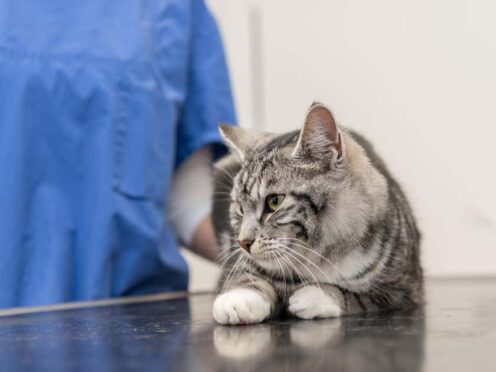The UK’s competition regulator has said it is launching an investigation into the vet industry over concerns that pet owners could be being overcharged.
With data showing that more than half of all UK households own a pet, veterinary services reach a large proportion of the population.
Here, the PA news agency looks at what has happened and what it means for pet owners.
We’ve highlighted a number of potential concerns in the #vets market, following our initial review into the sector.
That’s why we’re proposing to launch a formal market investigation.
Read more: https://t.co/Q0d8Mw9K5G pic.twitter.com/hfTsttUl13
— Competition & Markets Authority (@CMAgovUK) March 12, 2024
Why was the vet market put under review?
The CMA, which is in charge of tackling unfair behaviour across different industries, launched a review of the UK vet sector in September to look at consumer experiences and vet business practices for household pets.
It was worried that pet owners are not being given easy access to information about pricing and treatment options when deciding which vet to use and which services to buy.
It also wanted to find out whether consumers are being affected by the growing influence of large corporate vet groups and concentrated local markets.
After an initial review, it decided to launch a more formal investigation into the industry to see if it needs to enforce change.

What does ‘concentrated local markets’ mean, and why is it affecting vets?
Market concentration measures how many competitors operate in a particular market. The fewer firms that are operating, the more concentrated it is.
Almost 60% of vet practices in the UK are owned by large groups, up from about 10% a decade ago, and many are continuing to look for ways to expand.
Since 2013, 1,500 of the 5,000 vet practices in the UK have been acquired by the six large corporate groups: CVS, IVC, Linnaeus, Medivet, Pets at Home and Vet Partners.
In areas where most of the vet practices are owned by one large group, this could limit choice for consumers who tend to choose practices close to home, the regulator said.
It also highlighted the dominance of large companies over several areas of veterinary care, including specialist referral centres, out of hours care and diagnostic labs, alongside general practices.
This could potentially be leading to higher prices, reduced choice, lower quality services and independent competitors being forced to close.
Are vets charging customers too much?
One of the main concerns that the CMA raised in its review is that pet owners may not be given basic information like price lists and prescription costs by their vet.
It found that about 80% of the vet practices it checked do not display prices on their website, even for the most basic services.
It also raised worries that vets were not making clear to pet owners that they can buy medicine elsewhere after getting a prescription, meaning they are missing out on potential savings from shopping around.
Around 25% of pet owners did not know that getting a prescription filled elsewhere was an option, according to the report.
Some vets may make up to a quarter of their income selling medicines, which the CMA warned could mean there is little incentive to make pet owners aware of alternatives.

What have the large vet groups said?
Pets At Home, which says it is the UK’s leading pet care business, said it was disappointed by the CMA’s findings because it does not think it reflects its business model based on locally-owned vet practices.
“Whilst our brand is national, our veterinary practices are led by individual entrepreneurial vets who have clinical and operational freedom,” a spokeswoman said.
“They choose all pricing, products and services to ensure the best care for clients and their much-loved pets in their local area, which promotes competition in the market and helps to keep prices low.”
CVS Group saw its share price tumble by nearly a quarter on Tuesday following the news.
The vet group said it had engaged “constructively and proactively” with the CMA and had “put forward a package of possible remedies to address its concerns”.
It added: “CVS continues to believe this package could be adopted across the market and could address the CMA’s concerns more quickly than an 18-month investigation.”
